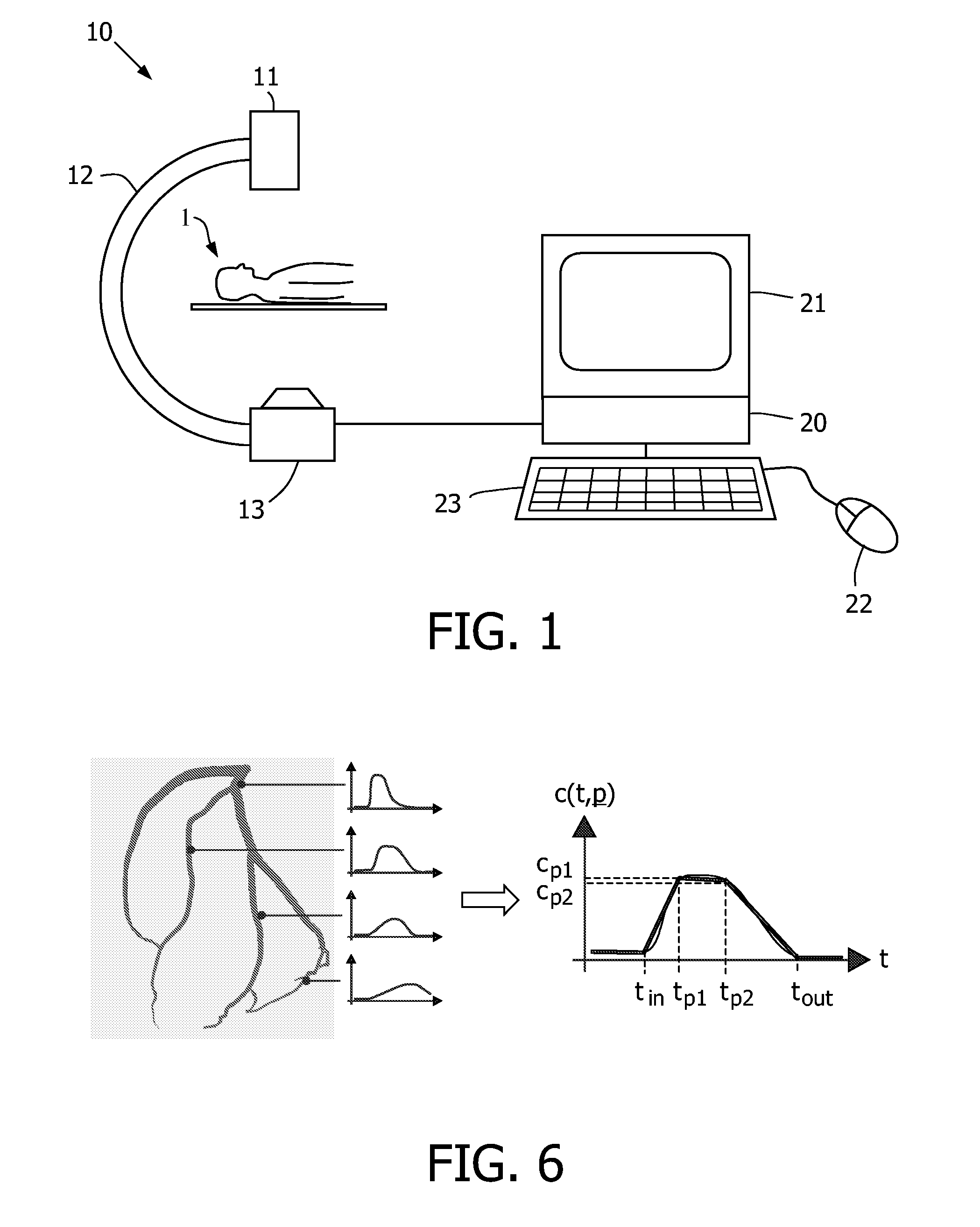System for the determination of vessel geometry and flow characteristics
a flow characteristic and geometry technology, applied in image enhancement, angiography, instruments, etc., can solve the problems of not providing complete diagnostic information, patient load of contrast agent and x-ray radiation is however rather high, and the effect of reducing the risk of vascular diseas
- Summary
- Abstract
- Description
- Claims
- Application Information
AI Technical Summary
Benefits of technology
Problems solved by technology
Method used
Image
Examples
Embodiment Construction
[0039]FIG. 1 shows schematically an investigation system as it may be used in connection with the present invention. The system comprises a rotational X-ray device 10 with an X-ray source 13 facing an X-ray detector 11, wherein both components are coupled via a C-arm 12. A patient 1 is positioned in the centre of the X-ray device 10 such that X-ray projections of the vessel system in a body region of said patient 1 can be generated from different directions. Furthermore, the X-ray device 10 is coupled to a data processing unit 20, for example a workstation, which is adapted to control the X-ray device 10 and particularly to process image data received therefrom. The data processing unit 20 is also connected to a monitor 21 on which a reconstructed vessel tree and its flow characteristics can be displayed, wherein the flow may for example be represented by a film sequence or in a color code of flow velocities. Via a keyboard 23 and a mouse 22 connected to the workstation 20 a user ca...
PUM
 Login to View More
Login to View More Abstract
Description
Claims
Application Information
 Login to View More
Login to View More - R&D
- Intellectual Property
- Life Sciences
- Materials
- Tech Scout
- Unparalleled Data Quality
- Higher Quality Content
- 60% Fewer Hallucinations
Browse by: Latest US Patents, China's latest patents, Technical Efficacy Thesaurus, Application Domain, Technology Topic, Popular Technical Reports.
© 2025 PatSnap. All rights reserved.Legal|Privacy policy|Modern Slavery Act Transparency Statement|Sitemap|About US| Contact US: help@patsnap.com



